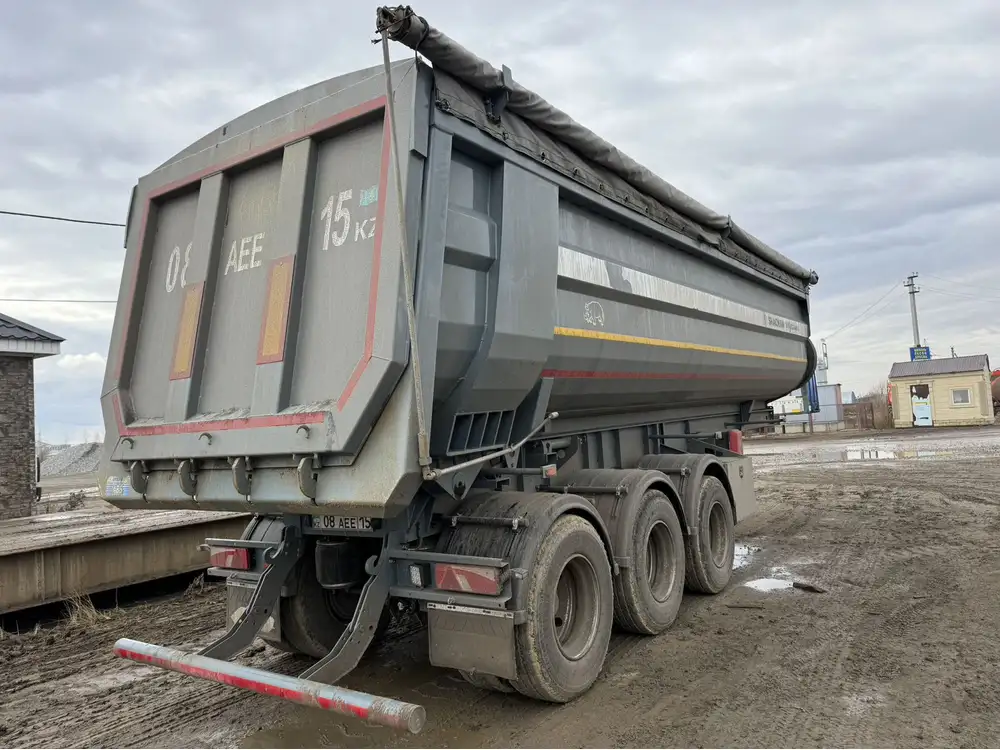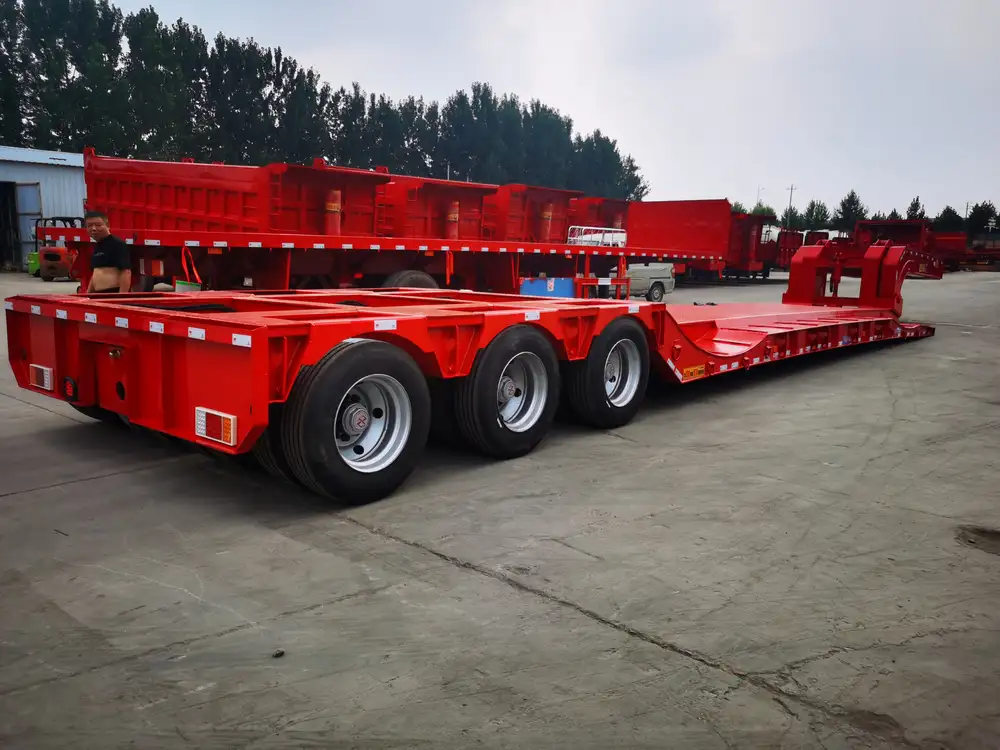In the realm of freight transportation, the semi-trailer plays a pivotal role. Among the various types of semi-trailers, plate semi-trailers stand out for their specific design and functionality. This guide delves deeply into what a plate semi-trailer is, its characteristics, advantages, applications, and essential considerations for potential buyers.
Table of Contents
- What is a Plate Semi Trailer?
- Design Features of Plate Semi Trailers
- Advantages of Using Plate Semi Trailers
- Applications of Plate Semi Trailers
- Comparison with Other Types of Semi Trailers
- Factors to Consider Before Purchasing a Plate Semi Trailer
- Maintenance Tips for Plate Semi Trailers
- Conclusion
1. What is a Plate Semi Trailer?
A plate semi-trailer is a specific type of semi-trailer characterized by its flatbed design, often reinforced with a steel plate floor. Its primary function is to transport heavy cargo, containers, or structural loads. Unlike enclosed trailers, plate semi-trailers allow for greater flexibility in loading and unloading procedures, enabling users to transport items that may not fit within conventional trailer configurations.

Key Characteristics
- Flatbed Design: Offers an unobstructed loading space that is low to the ground.
- Durable Construction: Typically built from high-strength steel, allowing it to handle substantial loads.
- Versatile Loading Options: Ideal for loading machinery, large cargo, or stacked materials.
2. Design Features of Plate Semi Trailers
The construction of plate semi-trailers involves several integral components that contribute to their effectiveness and reliability. Understanding these features can help buyers make informed choices.
| Feature | Description |
|---|---|
| Chassis | A robust frame that supports heavy weights, commonly built using high-strength steel. |
| Suspension | Many plate semi-trailers utilize air or spring suspension systems to enhance load stability and improve ride quality. |
| Decking | The floor is often made from thick steel plates; many models feature a non-slip surface to facilitate safe loading. |
| Side Rails | Optional side rails are available for increased cargo security, preventing items from sliding off during transit. |
| Axle Configuration | Common configurations include single, tandem, or tri-axle setups for optimal load distribution. |
3. Advantages of Using Plate Semi Trailers
Choosing a plate semi-trailer comes with numerous advantages that make it a preferred choice in the transportation sector.
Enhanced Weight Distribution: The flatbed design allows for even weight distribution across the trailer, minimizing the risk of damage or wear.
Easy Loading and Unloading: The open design enables forklifts and cranes to access loads easily from all angles, streamlining operations.
Cost-Effective for Specialized Loads: For businesses that frequently transport oversized goods or machinery, plate semi-trailers provide a cost-effective means to cater to specialized transportation needs.
Low Maintenance Needs: With fewer moving parts compared to enclosed trailers, plate semi-trailers can require less maintenance, reducing long-term operational costs.

4. Applications of Plate Semi Trailers
Plate semi-trailers are versatile and suited for various industries. Recognizing their applications can aid potential buyers in determining suitability for their business needs.
- Construction Industry: Frequently used for transporting construction materials, heavy machinery, and prefabricated structures.
- Agriculture Sector: Ideal for hauling farming equipment, livestock trailers, and bulk agricultural products.
- Oil and Gas: Used for transporting drilling machinery and other heavy equipment to remote sites.
- Logistics: Effective in logistics operations requiring the transportation of pallets, containers, and various goods.
- Manufacturing: Commonly used in manufacturing settings for transporting raw materials and finished products across facilities.
5. Comparison with Other Types of Semi Trailers
To appreciate the distinctiveness of plate semi-trailers, let’s compare them with other popular types of semi-trailers, including enclosed and refrigerated trailers.
| Type of Semi Trailer | Suitable Cargo Types | Advantages | Limitations |
|---|---|---|---|
| Plate Semi Trailer | Heavy & Oversized Goods | Easy loading, versatility, lower maintenance | Limited protection from elements |
| Enclosed Semi Trailer | General Freight | Enhanced security, weather protection | Heavier, may have higher maintenance |
| Refrigerated Trailer | Temperature-sensitive | Maintains specific temperatures | Higher operational costs |
6. Factors to Consider Before Purchasing a Plate Semi Trailer
Investing in a plate semi-trailer is a significant decision that requires careful analysis. Here are critical factors to ponder before finalizing a purchase:

Load Capacity
Evaluate the maximum load capacity of the semi-trailer, considering the types of cargo you plan to transport. Ensure the trailer can accommodate both weight and size requirements.
Material and Build Quality
The construction material, typically steel, substantially impacts durability and longevity. Look for trailers produced by reputable manufacturers that meet industry standards.
Axle Configuration
Choosing the correct axle configuration can greatly affect the performance of a plate semi-trailer. While tandem axles may offer better weight distribution for heavier loads, single-axle models may be suitable for lighter cargo.

Customization Options
Many manufacturers offer options to customize features such as side rails, ramps, or tie-down points. Consider these based on your operational needs.
Pricing and Budget
Compare prices from different suppliers and ensure that you consider not just the initial cost but also potential maintenance and operational expenses.
7. Maintenance Tips for Plate Semi Trailers
To maximize the lifespan and efficiency of your plate semi-trailer, adhering to a regular maintenance routine is essential. Here are vital tips:
Routine Inspections: Conduct regular inspections of the trailer’s components, including the chassis, suspension, and flooring, to identify any wear or damage early.
Cleaning: Regularly clean the trailer to prevent corrosion and rust buildup, especially after transporting corrosive materials.
Lubrication: Ensure all moving parts such as axles and bushings are adequately lubricated to guarantee smooth operations.
Brake System Maintenance: Regularly check the brake system, as it is crucial for safety and performance.

8. Conclusion
Plate semi-trailers serve a vital function in the transportation industry, offering robust, adaptable solutions for a broad range of cargo types. Their design offers significant advantages and superior functionality, making them an excellent choice for businesses focused on efficiency and adaptability.
In summary, understanding what a plate semi-trailer is, its features, applications, and advantages can empower potential buyers to make informed decisions. By evaluating the maintenance needs and financial implications of ownership, companies can seamlessly integrate plate semi-trailers into their logistics and transportation operations, leading to enhanced efficiency and productivity.
Exploring the world of plate semi-trailers opens up opportunities for businesses seeking reliable and versatile transportation solutions. Their strategic applications across varying industries emphasize their significance and enduring value in the freight and logistics landscape.



